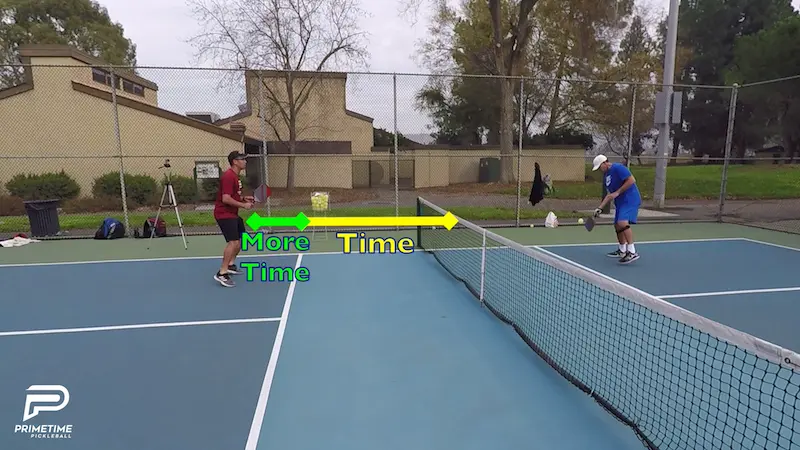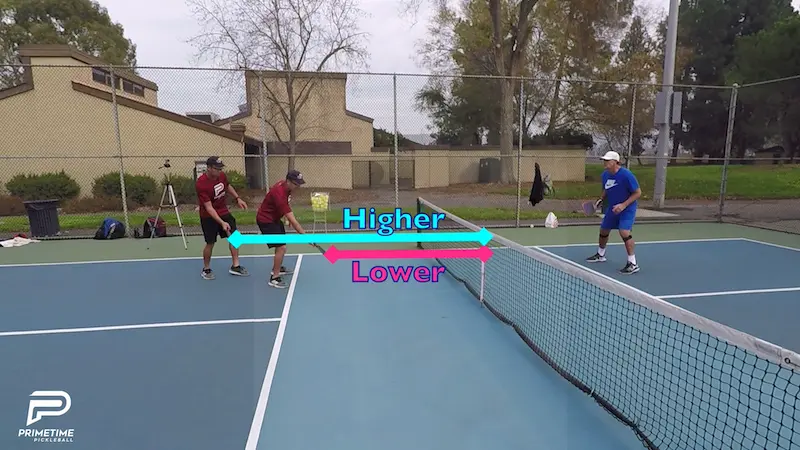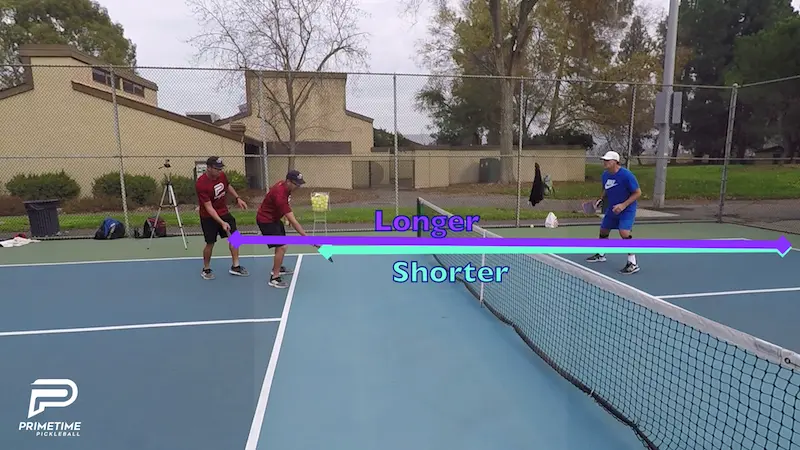This blog is about a pretty controversial topic. You have people saying that you should stay up at the non-volley zone line and never retreat and then you have others saying you don’t have to play there, you could play wherever you want.
We’re going to give you two good reasons that you could, and should, play off of the non-volley zone line.
To clarify, when we’re talking about playing off of the line, we’re not talking about playing all the way back in the court in the no man’s land transitional area.
We’re talking about playing off the line, about one, two maybe three feet back off of it.
The first thing that this can do for you is that it can help with your reaction time. If you play against players that are really good at speeding up the ball and are very offensive, you may be getting caught up at the non-volley zone line.
Perhaps you’re getting caught there and dumping those volleys into the net. You can’t seem to handle their pace and their speed.
By taking a step back, big or small, this is going to help you with that reaction time. The ball is going to actually slow down a little bit more and and you’ll be surprised how much taking that step back can make a difference.

The other thing that taking a step back achieves is that can allow you to be more aggressive.
If you’re really up at the non-volley zone line you’re mainly going to be hitting a defensive shot. You won’t have time to be offensive if your opponent is being offensive and hitting aggressive balls.
With the extra time you have by stepping back, you can actually be pretty aggressive with your shot. This is another reason why it’s really good playing off the line.
Now let’s walk through a scenario with your training partner/opponent to give you an example of the situation.
You’re going to dink against your opponent. They will do their best to keep their dink short and unattackable. You’ll be up at the non-volley zone line trying to find something to attack. You’ll even try to reach in and attack.
Basically, your opponent is getting your contact point to be below the net height. Because of this, even if you hit it out of the air or let it bounce the ball will not be an attackable one.

So now, we want to point out that if you back up off the line a little bit, your opponent will possibly now send balls a little bit deeper which you could then attack or roll and create some sort of offense.
Keep in mind, that with the net so close, it’s going to be hard to attack balls and have it clear the net. If you’re further back however, you have more distance to the end of the opposing baseline so it might be a little bit easier to attack some balls.

The only thing that you have to worry about when playing somewhat off the non-volley zone line is that, yes, your opponent does have more area to hit at your feet.
But, if you keep the ball down well and force your opponents to hit their shots at the low contact point than you minimize that problem substantially.
The benefits we’ve discussed which are: 1) more reaction time which will allow you to hit a better defensive shot or even give you the time to counter-attack and 2) a higher contact point off the bounce that can be more easily attacked because the net is not in your face and there’s now more distance between you and the opposing baseline, can more than offset the cost of giving your opponent a little more access to your feet.